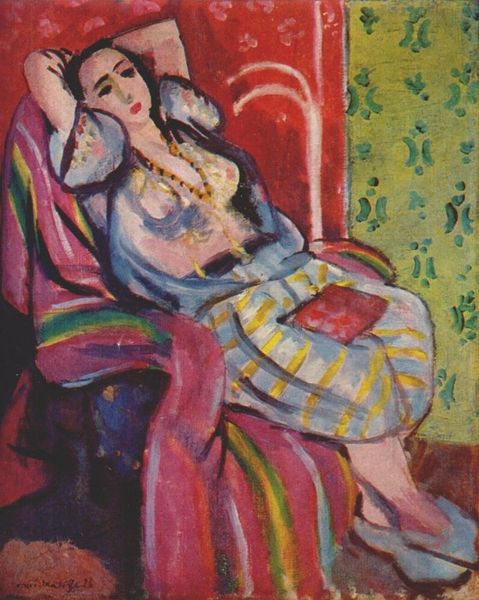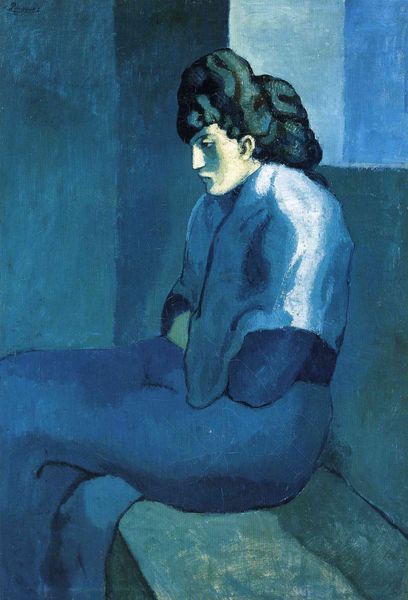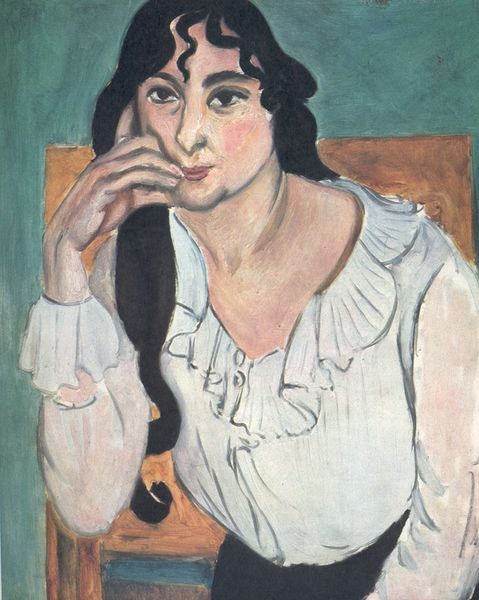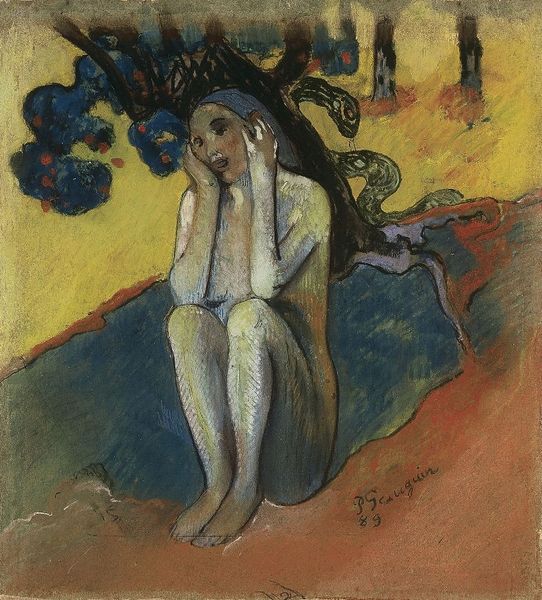
Copyright: Henri Matisse,Fair Use
Editor: Henri Matisse's "Woman in Yellow and Blue with a Guitar," painted in 1939, feels almost deliberately unsettling. The colors are bold, clashing almost, and the perspective seems flattened. How should we interpret this striking oil-on-canvas work? Curator: This painting speaks to a particular moment in art history, influenced heavily by sociopolitical anxieties of the late 1930s. While superficially a pleasant scene, the discordant colors and simplification of form arguably reflect a deeper unease permeating European society on the cusp of World War II. Think of Fauvism, but with the volume turned down. The "wild beasts" have become domesticated, yet a tension remains. Do you see how the domestic interior, traditionally a safe haven, feels somehow...staged? Editor: I see what you mean about the staging. It feels less like a comfortable home and more like a theatrical set. Was Matisse intentionally responding to the political climate? Curator: Whether explicitly intentional or not, artists are always products of their time. The dissonance we perceive could be Matisse's subconscious grappling with the impending chaos. Art often functions as a barometer, reflecting societal pressures through subtle shifts in style and subject matter. Consider the use of flattening perspective and jarring color combinations to visually challenge our notions of harmony. Editor: So, it’s not just a portrait; it's a commentary on the disruption of harmony in the world. Curator: Precisely. This work encapsulates a pivotal moment. It stands as a vibrant, yet disquieting, reflection of a society bracing for profound upheaval. And that helps to frame our interpretation and understanding. Editor: This conversation reframed my perception completely! I went from seeing clashing colors to understanding the work as a societal commentary. Curator: That's the power of looking at art through a historical lens! We moved from simply observing its aesthetic qualities to understanding the historical forces that helped shaped its creation and initial reception.
Comments
No comments
Be the first to comment and join the conversation on the ultimate creative platform.













